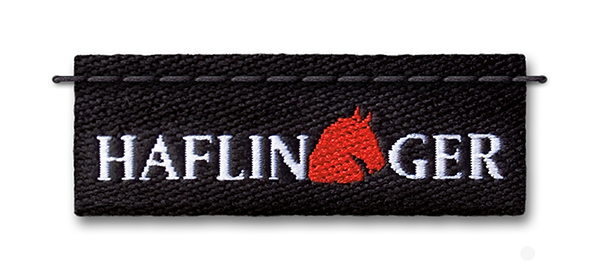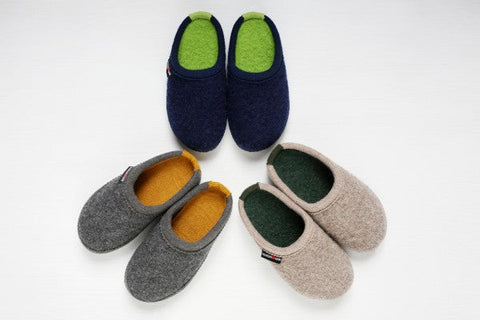Our feet are among the most hard-working parts of the human body — after all, they carry us throughout our entire lives. Maintaining good foot health is therefore essential for overall well-being. However, improper footwear, uneven strain, or certain medical conditions can cause the feet to deform and lead to pain. Foot misalignments are not uncommon — they are a reality for many people. But what can you do about them? And what are the most common types of misalignments? Let’s take a closer look.
What Is a Foot Misalignment?
A foot misalignment refers to a deviation from the ideal, anatomical shape of the human foot. When the bones or natural arches of the foot become deformed, pain may occur — either with every step or only during certain movements.
In some cases, foot misalignments are also an aesthetic concern, as the visual appearance of the feet no longer conforms to what is considered “normal.” A good example is hallux valgus, a misalignment of the big toe where a visible bump forms along the inner edge of the foot.
Not all foot deformities, however, lead to health problems. Minor deviations are common and typically harmless. Sometimes what appears to be a lasting misalignment may even correct itself over time. Many young children, for example, have flat feet simply because their feet are not yet fully developed — this temporary stage usually resolves on its own and is nothing to worry about.
Interestingly, the “ideal” foot described in anatomy books is actually quite rare. Most people have slightly deformed feet that cause no pain or mobility issues. In fact, many misalignments are perfectly normal and do not require medical or surgical correction.
Causes of Foot Misalignments
There are many potential causes behind a foot misalignment, but they generally fall into two categories: congenital (present at birth) and acquired (developed over time).
Congenital misalignments often have genetic origins. People with weak connective tissue, for instance, tend to have less stability in the supporting structures of the foot, making them more prone to deformities. Even the position of a baby in the womb can contribute to an abnormality such as clubfoot, where both feet curve inward like a sickle. Early treatment is crucial to prevent long-term issues.
Acquired misalignments, on the other hand, develop later in life — often as a result of personal habits. Wearing ill-fitting shoes for many years can cause the feet to shift out of alignment. Likewise, uneven strain from sports or prolonged sitting can negatively affect the natural anatomy of the feet.
Symptoms of Foot Misalignments
Symptoms of a foot misalignment can vary depending on the type and severity, but many share similar warning signs. If left untreated, they can lead to chronic foot pain and even secondary problems in the hips, knees, or back.
Common symptoms include:
-
Corns and pressure points on the feet
-
Altered gait or walking pattern
-
Limited mobility
-
Persistent joint pain
-
Painful muscle cramps
The specific symptoms depend on the type of misalignment, but the following deformities are among the most common.
The Most Common Types of Foot Misalignment
The human foot is a complex structure composed of 26 bones, along with numerous muscles, ligaments, tendons, blood vessels, and nerves. A healthy foot never rests completely flat on the ground. Instead, it has three contact points — the heel, the inner ball, and the outer ball — that evenly distribute body weight while walking. Between these points, the foot forms arches that allow for flexibility and stability.
When a misalignment occurs, this natural balance is disrupted. The body’s weight is no longer distributed evenly, the arches may collapse or deform, and the bones themselves can shift.
Foot misalignments are very common — the most widespread types include:

Pronation Foot
A pronation foot is an inward-turning foot deformity often caused by unstable tendons and ligaments or muscle weakness. Unlike a healthy foot, the arch is no longer held in its natural position. Instead, the heel tilts inward, placing excessive strain on the inner side of the sole. This often leads to painful swelling around the inner and outer ankle.

Fallen Arch
In a fallen arch, the foot muscles are too weak to stabilize the longitudinal and transverse arches of the foot. As a result, the entire foot skeleton slightly sinks downward. Most of the foot — from heel to ball — rests completely on the ground while standing or walking. This can cause pain in the ankle joint and under the middle of the sole, and calf cramps are also a common symptom.

Splayfoot
A splayfoot can develop due to weak tendons and ligaments, heavy lifting, or improper footwear. In this deformity, the metatarsal bones spread apart, causing the forefoot to widen. The natural transverse arch flattens completely and becomes overloaded. Typical symptoms include calluses, pain, corns, and pressure points in the middle of the forefoot. In addition, a splayfoot often contributes to the development of hallux valgus.

Flatfoot
A flatfoot is a combination of pronation foot, fallen arch, and splayfoot, usually caused by muscle and ligament weakness. While the natural longitudinal arch only sinks slightly in a fallen arch, it collapses completely in a flatfoot. This leads to overstretched ligaments, misaligned joints, and chronically strained muscles. Flatfoot is one of the most common deformities in infants and young children, but it usually corrects itself naturally by school age.

High Arch
The opposite of a flatfoot is the high arch, which can sometimes develop from wearing the wrong shoes. This condition is characterized by an excessive upward curve of the inner arch, so that only the ball of the foot and heel touch the ground — leaving the midfoot “floating” in between. The result is increased pressure on the forefoot and heel, often leading to calluses, pressure sores, and claw toes.

Hallux Valgus
Der Hallux Valgus – auch als Ballenzeh, Frostballen oder Schiefzehe bezeichnet – ist die häufigste Zehenverformung. Bei dieser Fehlstellung dreht sich der Großzeh in Richtung der kleineren Zehen, sodass am Fußinnenrand, im Bereich des Großzehgrundgelenks, ein deutlich sichtbarer Ballen hervortritt. Anfänglich ist der Hallux Valgus nur ein kosmetisches Problem, doch später ist er zunehmend mit Schmerzen verbunden. Mögliche Ursachen sind u. a. eine angeborene Bindegewebsschwäche sowie ungesundes.
Metatarsus Adductus
Metatarsus adductus, or curved foot, is a very common foot deformity in babies and often affects both feet. It typically results from the baby’s position in the womb. The inner side of the front and middle foot curves inward — resembling a sickle shape. Fortunately, this condition can usually be corrected easily, for example through gentle casting treatments that gradually bring the feet into the correct position. Only in rare cases is surgery required to correct the deformity.

5 Exercises for Correcting Foot Misalignments
To prevent or correct foot deformities, regular foot exercises are highly beneficial. Targeted movements can strengthen the foot muscles and improve flexibility in the long term. However, always make sure to perform each exercise slowly and in a controlled manner. Stop immediately if you experience any pain.
Here are 5 effective exercises suitable for all types of foot misalignments.
1. Toe Flexing and Stretching
This exercise helps strengthen and activate the toe flexor muscles. It also improves or maintains the mobility of your toes and toe joints.
To perform the exercise correctly, follow these steps:
-
Sit upright on a chair.
-
Place your feet flat on the floor.
-
Curl your toes backward.
-
Then stretch your toes forward.
-
Repeat the exercise with the other foot.

2. Picking Up Marbles
A simple gripping exercise like picking up marbles can help improve coordination, toe flexibility, and actively strengthen the toe muscles.
To perform this exercise correctly, follow these steps:
-
Scatter a few marbles on the floor.
-
Try to pick them up using only your toes.
-
Place the collected marbles into a small bowl or container.
-
Then switch to the other foot.
Tip:
If you’re trying this exercise for the first time, you don’t necessarily have to use marbles. You can start with larger, softer objects, such as small plush toys — this makes the exercise much easier for beginners.

3. Ankle Circles
To mobilize, strengthen, and loosen your ankle joints, it’s helpful to practice controlled ankle rotations regularly.
Here’s how to perform the exercise correctly:
-
Sit upright in a comfortable position.
-
Bend one leg and hold it gently by the lower leg.
-
Slowly and evenly rotate your ankle in a circular motion.
-
Make sure to point your toes downward as you move through the circles.
-
Repeat the movement 20 times total — 10 times clockwise and 10 times counterclockwise.
-
Switch to the other leg and repeat.
This exercise helps improve joint flexibility, stimulate circulation, and enhance ankle stability — ideal for preventing or balancing foot misalignments.

4. Toe Crawl
Want to boost your foot mobility and give your arches some love? The toe crawl is a simple yet super effective foot exercise.
Here’s how to do it:
-
Place half a tennis ball on the floor.
-
Dig your toes into the ground.
-
Pull your foot toward the ball.
-
Once you reach it, gently roll the ball a little forward.
-
Repeat 5–10 times, then switch to the other foot.
It’s a small move that makes a big difference for foot strength and flexibility!

5. Foot Massage
Our feet carry us through life—literally—so they deserve some TLC. A foot massage is perfect for relaxation, boosting circulation, and easing tension.
Try this simple routine:
-
Place a spiky massage or fascia ball on the floor in front of you.
-
Step onto the ball with one foot.
-
Massage your sole by moving your foot in circles or back and forth over the ball.
-
You can do this standing or sitting, whichever feels more comfortable.
Take a few minutes for your feet—they’ll thank you!

Fix Foot Misalignment with Insoles
If your feet aren’t quite lining up the way they should, corrective insoles made from natural materials can be a game-changer. Usually prescribed by an orthopedist, these insoles are customized to your unique foot shape and alignment—because let’s face it, every foot has its own personality. They not only help ease discomfort but can also gently guide your feet into a healthier position, relieving pressure where it’s needed most.
These days, you’ve got two main options: built-in insoles or removable ones. Built-in insoles stay fixed in a particular pair of shoes, while removable ones are super flexible—you can simply swap them into any shoes you already own. That means no need to buy a whole new shoe wardrobe, just add comfort (and support!) to your favorites.
Pro Tip: Want that “walking on clouds” feeling at home too? Upgrade your slippers with a premium removable insole from Haflinger, or browse our slippers designed to fit orthotic inserts. The anatomically shaped footbeds mold perfectly to your foot, all while being made from natural, eco-friendly materials. Cozy, supportive, and good for the planet—what’s not to love?
The Benefits of Walking Barefoot:
-
Strengthens ligaments and tendons
-
Builds foot muscles
-
Stabilizes joints
-
Encourages natural rolling of the feet
-
Improves coordination
-
Ensures proper weight distribution
A Word of Caution: If you’re used to always wearing socks or shoes, start slowly. Bare feet are loaded and stressed differently than feet in shoes. Begin with no more than 100 meters per day until your feet get used to it.
Foot Misalignment Doesn’t Have to Happen!
Foot misalignments are common, and many aren’t just a cosmetic concern—they can also be quite painful. But the good news is: there’s a lot you can do about it. Foot exercises, corrective insoles, and regular barefoot walking can all help prevent and counteract misalignments and deformities. Your feet will thank you!





Comments (0)
There are no comments for this article. Be the first one to leave a message!